Building projects for flight and space is one of the most popular areas in recent times. From building mini satellites to setting up weather balloons that fly to what is termed as near space, open source hardware and software solutions are driving the poor man’s space program.
“Learning to develop engineering skills is like learning to lift weights. You should start with an empty exercise and then keep adding challenges,” explains Eben Upton, founder of the Raspberry Pi Foundation, in a recent interview on the eve of Raspberry Pi 2 launch. Open source hardware tools are built to do just that.
Arduino, one of the earliest and most popular lines of open source hardware tools, has had a growing toolset since 2005. Having withstood the test of time, it now enjoys a passionate following of engineers, tinkerers and hackers who use it to prototype products and test project designs. In 2015, we now have a vast collection of open hardware developer platforms to choose from.
Over the past decade, we have seen open hardware being used for a variety of projects, including fun projects like building a radio-controlled (RC) car, utilitarian projects like implementing a home media centre or server, all the way to setting up serious industrial automation systems that can control a building. But is that all?
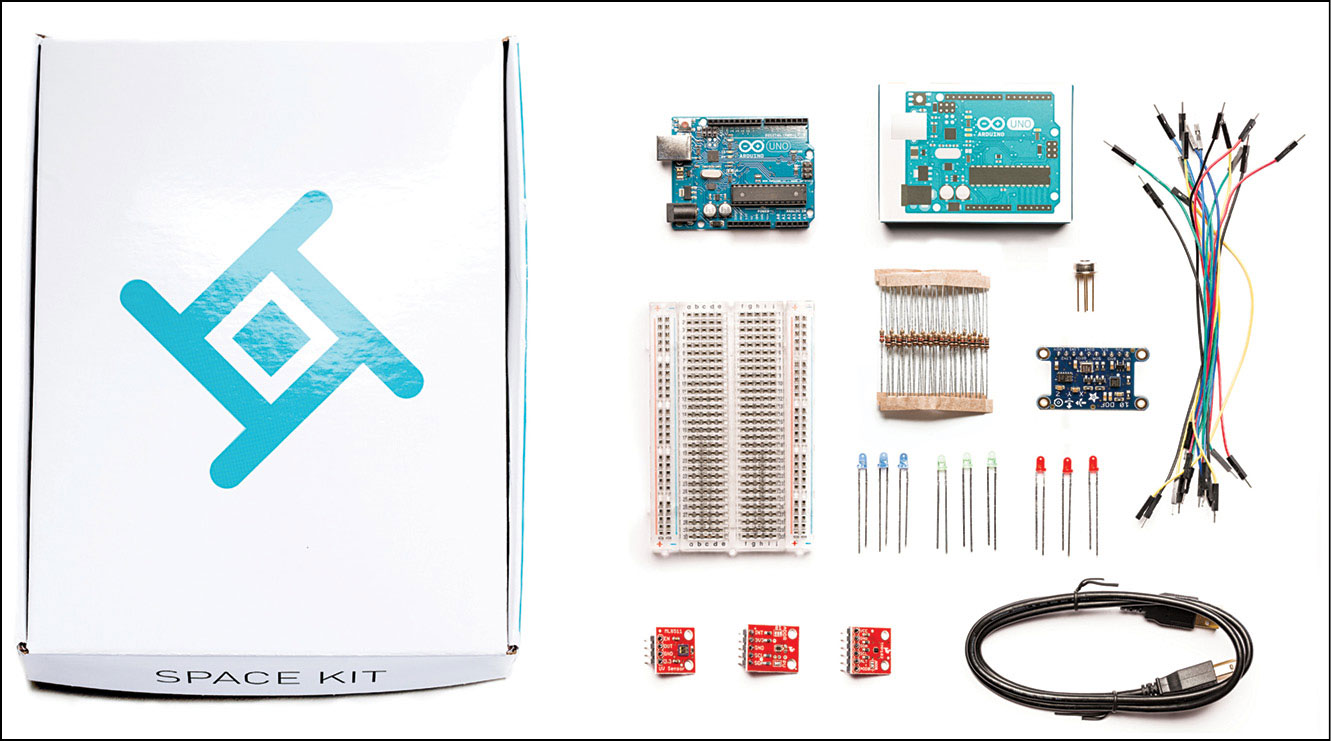
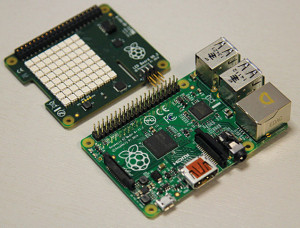
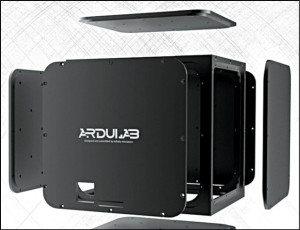
Up above the world so high
Aerospace. That is where the excitement lies these days. During the interview, Upton talked about his favourite kind of project. “I am a big fan of space-style projects, and Dave Akerman is the one who has been doing some fascinating work in sending Raspberry Pi up in weather balloons.” The latest iteration of the device features radio telemetry, slow scan digital video (SSDV) images, a 3G link for video and backup telemetry. It sends a live video stream as well.

Aerospace projects are no more something that governments alone can do. For instance, SpaceX and Elon Musk have made the sector hot from both a commercial and passion standpoint, with its ultimate goal stated to be that of enabling people to live on other planets.
Would you like to…
Let us take a look at how open source solutions have helped build cool aerospace projects, and how you can leverage the same for your aerospace project.
… perform space experiments
Setting up experiments that can be run in the International Space Station (ISS) is not far-fetched anymore. Explore some of these cool open hardware solutions that will let you do just the thing.
ArduSat
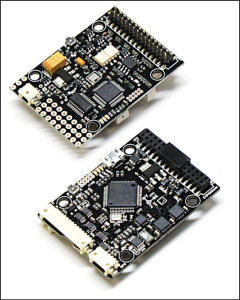
This is probably one of the most famous projects to have taken the humble Arduino and ridden it to space. It is built to the specifications of CubeSat, which was developed by Stanford University, the USA, and California Polytechnic State University, the USA, back in 1999. CubeSat specifications basically call for a 10cm cube that fills up to a volume of exactly one litre, and can weigh up to 1.33kg.
Equipped with cameras, sensors and radios, the project is built to be an open source platform that will enable others to run experiments in space without having to send up a satellite of their own.
ardusat.com is a very good source for learning resources. Set up with the aim to expand science, technology, engineering and maths (STEM) innovation to space, it features everything from the basics to features that enable you to understand the numerous sensors that can be placed on satellites and how to use these. It also makes individual space kits available, which include Arduino Uno, lessons on remote sensing, a collection of sensors and other components.
Astro Pi
Would you rather explore the universe on the earthly-named Raspberry Pi? The Raspberry Pi Foundation recently announced that they have teamed up with British European Space Agency (ESA) astronaut Tim Peake to send Raspberry Pis to space, where these will be connected to the Astro Pi board. How cool is that!
Once in the ISS, these Raspberry Pi computers will be connected to Astro Pi boards, which come loaded with a collection of gadgets and, of course, sensors.
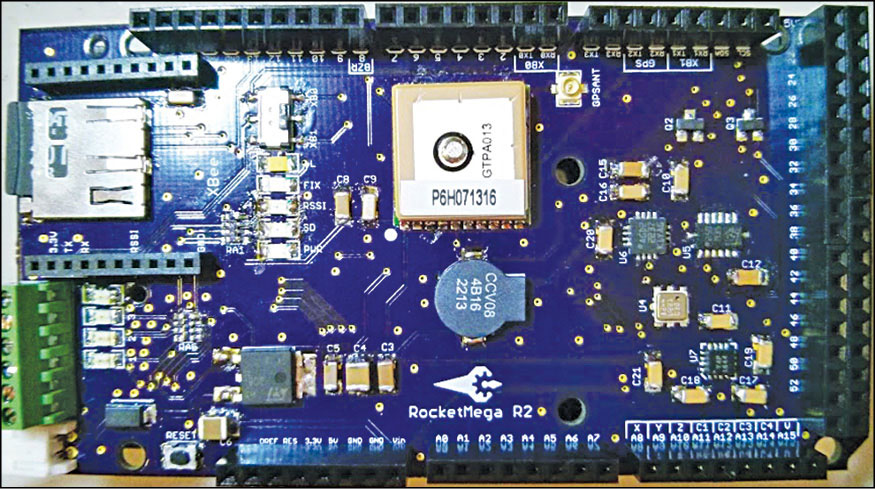
Astro Pi systems will be deployed in a number of different locations on board the ISS, where these will collect the generated data and download it to Earth, where these will be distributed to the teams.
Astro Pi allows students the chance to devise and code their own experiments or apps to run in space. The Astro Pi board or hardware attached on top (HAT) comes with a gyroscope, magnetometer sensor and an accelerometer, as well as a suite of sensors that can detect temperature, humidity and barometric pressure. There is also a camera module and an infra-red camera module attached to it.
The foundation also set up a competition to promote code development, which is set under five themes, namely, spacecraft sensors, satellite imaging, space measurements, data fusion and space radiation. This event has several space agencies involved, such as the UK Space Agency, European Space Agency, ESERO-UK, Airbus DS, National Nuclear Laboratory and the National Physical Laboratory.

ArduLab
Created by Manu Sharma, co-founder of Infinity Aerospace, ArduLab is an ATmega2560-powered platform that enables NASA-approved experiments to be run inside the ISS. The result is a kit that is to space experiments what Arduino is to electronics experiments. It comes with all necessary features and interfaces to kick-start experimenting on the ISS. Atmel claims, on their website, that Ardulab has been used by both school students and NASA-JPL researchers for experimenting.
While it used to retail at more than Rs. 120,000 per kit, the good people at Infinity Aerospace later open sourced the entire project so that you can build it yourself. Their website ardulab.com has detailed plans that will help you to build the three main components of the system; the chassis, electronics and software (Ardulab OS). It also includes a kit that comes with some basic programs in Arduino Sketch File format (*.ino). Ino is a command line toolkit for working with Arduino hardware.
Now that you have all your space experiments set and ready, all you need to do is build a rocket to see how high you can get it.
Gravity development board
Designed to help reduce the cost of space-tolerant electronics, Blaze Sanders designed a board to withstand the harsh environments of space. Some claim this board to be a good alternative for Arduino Uno, which has been the other preferred prototyping environment. The gravity development board (GDB) started life as the high-power driver for Lunar Wombot, which its creator was working on for NASA. “We needed a small embedded system that could drive Firgelli L16 linear actuators and act as the control and communication system for the entire Lunar Wormbot,” he states in an article about the board.
Some of the challenges that face an electronic board designed for space include its ability to handle the vibrations of launch vehicles, heat distribution in a weightless atmosphere (convention does not work in space) and redundancies to prevent single-event upsets caused by radiation.
The GDB is designed for beginners and experts, and can be programmed in four languages, including
12-blocks GUI, SPIN, C and assembly.
The board comes in three forms:
1. E series for Earth based applications where size and ease of development matter,
2. M series for Mars or planetary based applications and
3. S series for free space based applications where rad-hard components are a must. This type also comes with Xilinx Virtex-5Q field programmable gate arrays (FPGAs), allowing reconfigurable hardware.
Would you like to be RocketMan
Ever seen the movie RocketMan from 1997 where an engineer gets to ride a rocket to planet Mars? Well, you could start working for your chance at it too, by building some of these electronics projects designed to help control your rocketship.
Altus Metrum

Although they have a collection of open hardware and software designs available at their website, TeleMetrum and TeleMega are the ones at the top of the line. Powered by ST Micro’s STM32L151 ARM Cortex M3 based microcontroller (MCU), these both come with TI’s CC1120 RF transceivers, u-blox’s MAX-7Q GPS receivers and Freescale’s MMA6555 inertial sensor, among other components. These boards were designed using the open source gEDA (an open source electronic design automation tool) for schematic capture and PCB layout.
TeleMetrum is recording dual-deploy altimeter for high-power model rocketry with integrated GPS and bi-directional telemetry link. It features a 70cm ham-band receiver for telemetry downlink and integrated support for electronic ignition of pyro stages.
TeleMega is a version of TeleMetrum, which is designed for high-power rockets. Although it sounds like it uses an ATMega chip, it actually runs on ST Micro’s MCU. In addition to the features of TeleMetrum, TeleMega also makes it possible to configure pyro events with up to six pyro channels, and can be based on time and various flight events as well as status-like angles from vertical and more.
TeleMega firmware runs on an operating system called AltOS, which provides features like flight monitoring, post-flight analysis, device configuration and firmware updation. AltosUI, through which these features can be accessed, runs on Linux, Mac OS X and Windows as well.
Rocket Mega
Designed by OSAerospace to be a low-cost open source platform for development and experimentation in rocketry and other aerospace applications, the Rocket Mega project is based on Arduino hardware.
What it essentially contains is a Rocket Mega shield, code and an Eagle CAD library that contains custom parts and footprints. Complete details on how to build the board, including bill of materials and schematics are available at opensourceaerospace.com
The R1 version is a shield designed to work with Arduino Mega board. The R2 version comes with several improvements, yet still manages to keep the same price point in raw parts. Improvements include using MOSFETs rather than relays for controlling the pyro channels, apart from shifting to ceramic capacitors, improved routing and fewer individual parts.
TI’s MSP430 LaunchPad + CC430 kit rocket launch controller
TI’s aptly named LaunchPad development kit combined with a CC430 low-power wireless development kit provides for a good base to build a remove model rocket launch controller with streaming video support.
Digi-Key website’s video library has a good video showing the system in action, where CC430 controls the current to the rocket ignition system by using an optically-isolated MOSFET. Another laptop-connected kit controls a servo that supports video equipment.
Autopilot
The APM Autopilot suite is an open source auto pilot solution that includes hardware, firmware and software to run an autopilot vehicle. The firmware is what contains the skill-set code, which configures the system for the kind of vehicle that you are going to be running. Examples are ArduPlane that allows you to give a fixed-wing plane full autonomous capability and ArduRover that does the same for an unmanned ground vehicle. APM’s APM:Rover won the 2013 and 2014 Sparkfun Autonomous Vehicle Competition too, so that gives good credibility to the system.
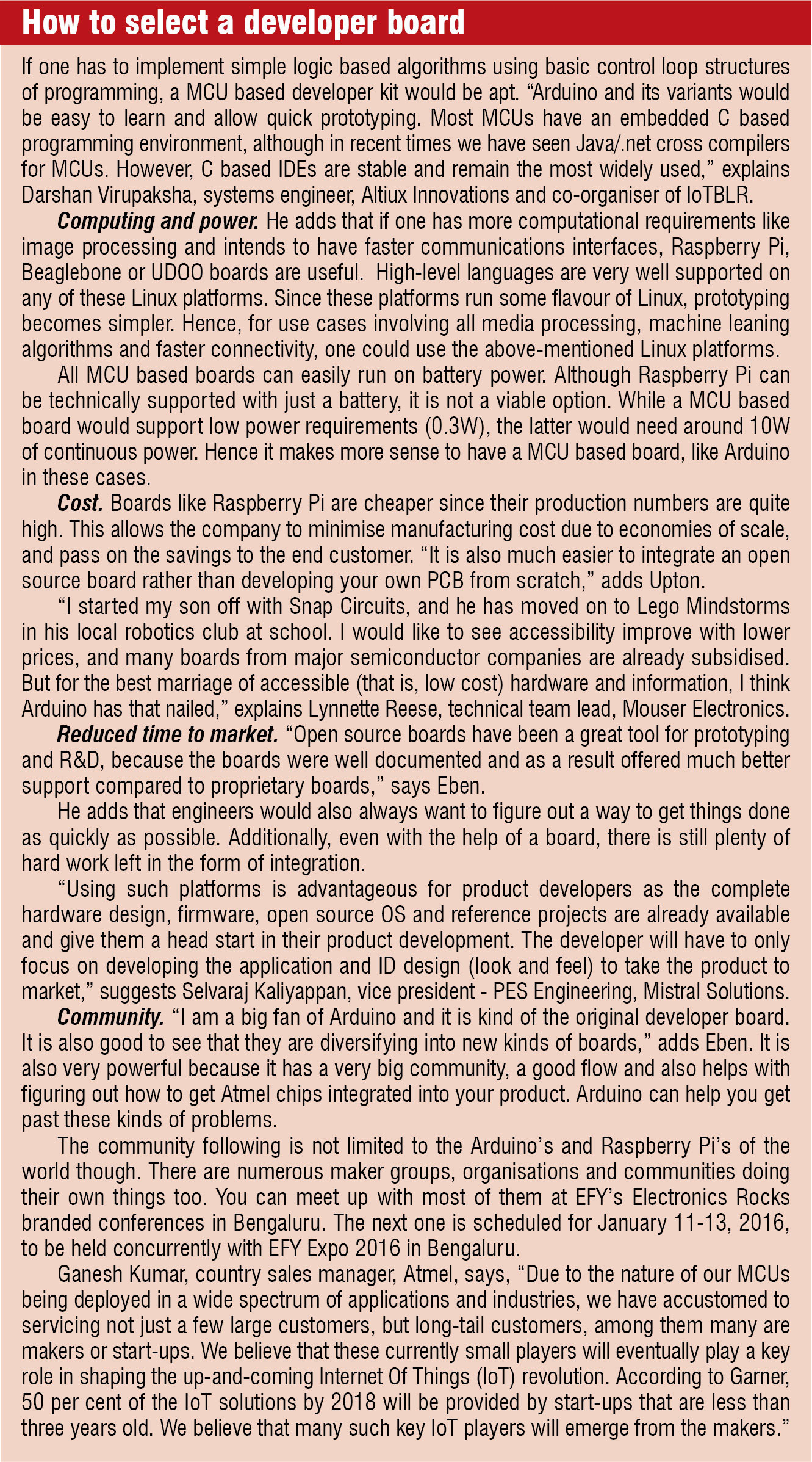
The hardware that you can opt from for this system includes 3DR Pixhawk, which features an advanced processor and sensor technology from STMicroelectronics and comes with a NuttX real-time operating system (RTOS).
APM 2.6 is another piece of hardware that can be integrated for implementing autopilot features onto the board. It is Arduino compatible but requires a GPS unit and a compass module for full autonomy.
One small step
Do not wait. You are in the golden age for developers, with access to a ton of code and hardware that has already enabled others to develop amazing projects. Start tinkering with these boards to build your dream project. Hopefully, one of these might let you touch base with space: the final frontier.







